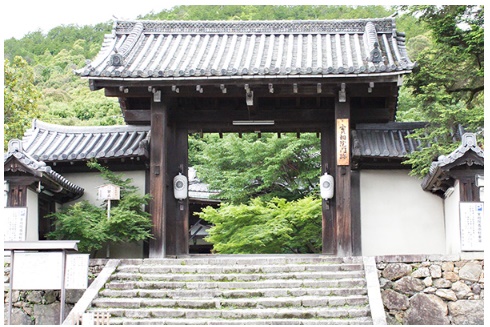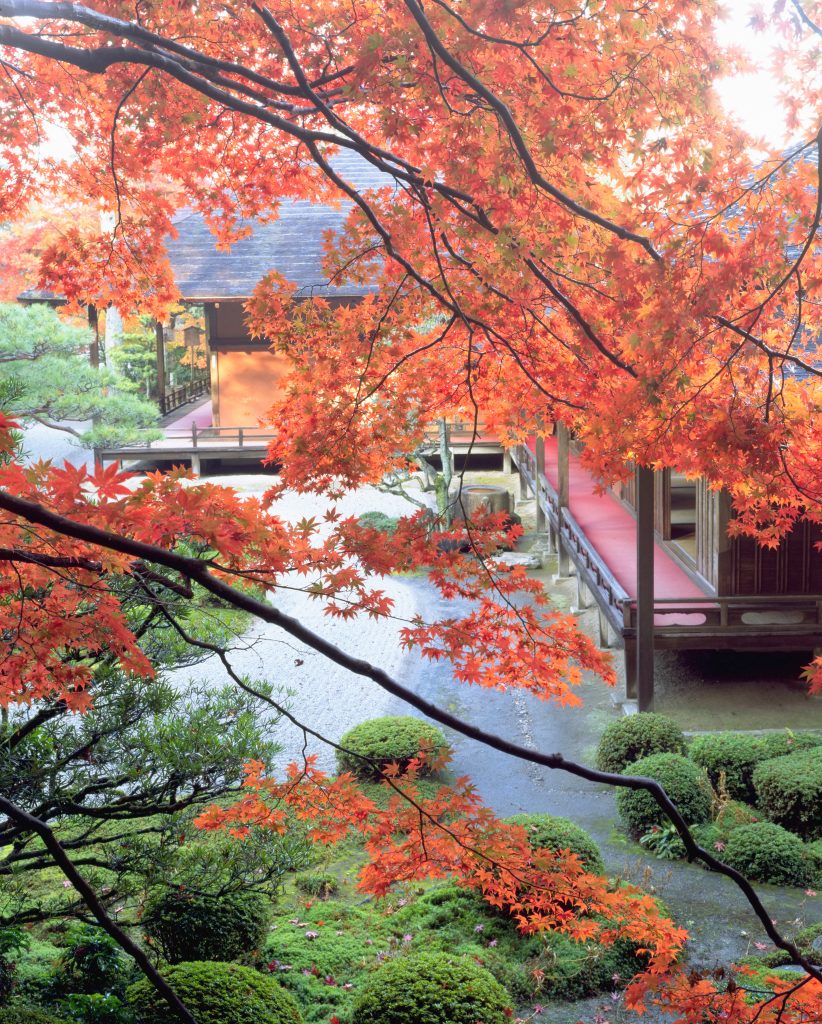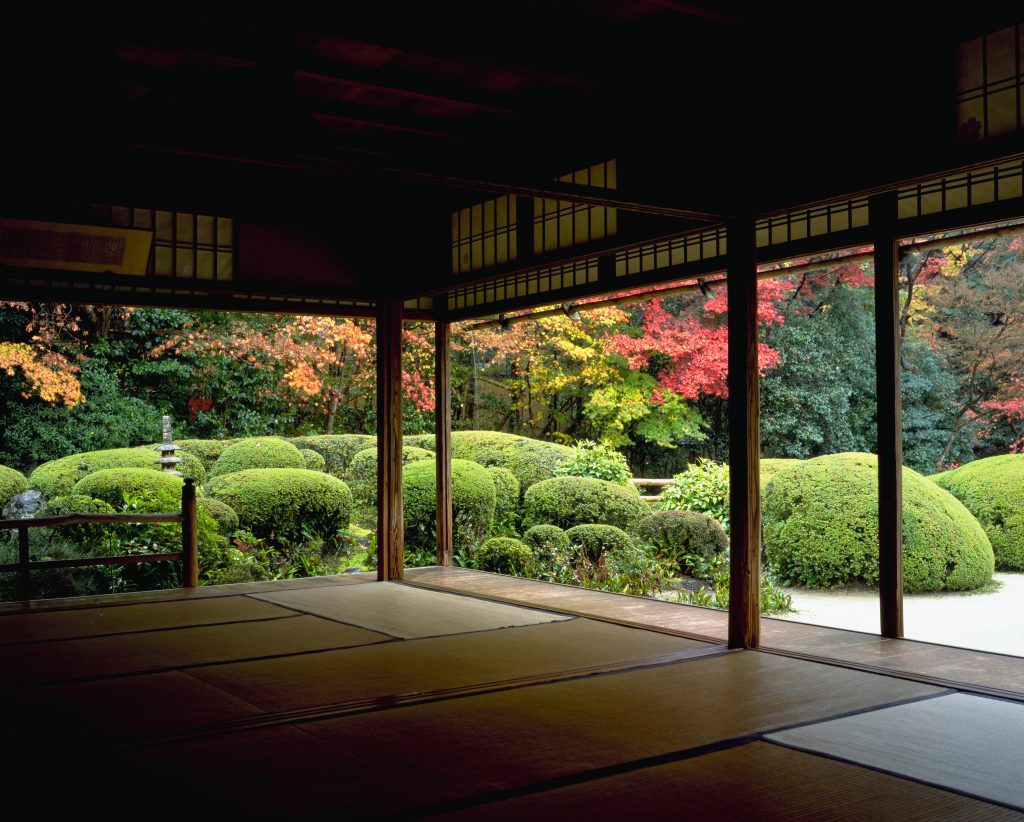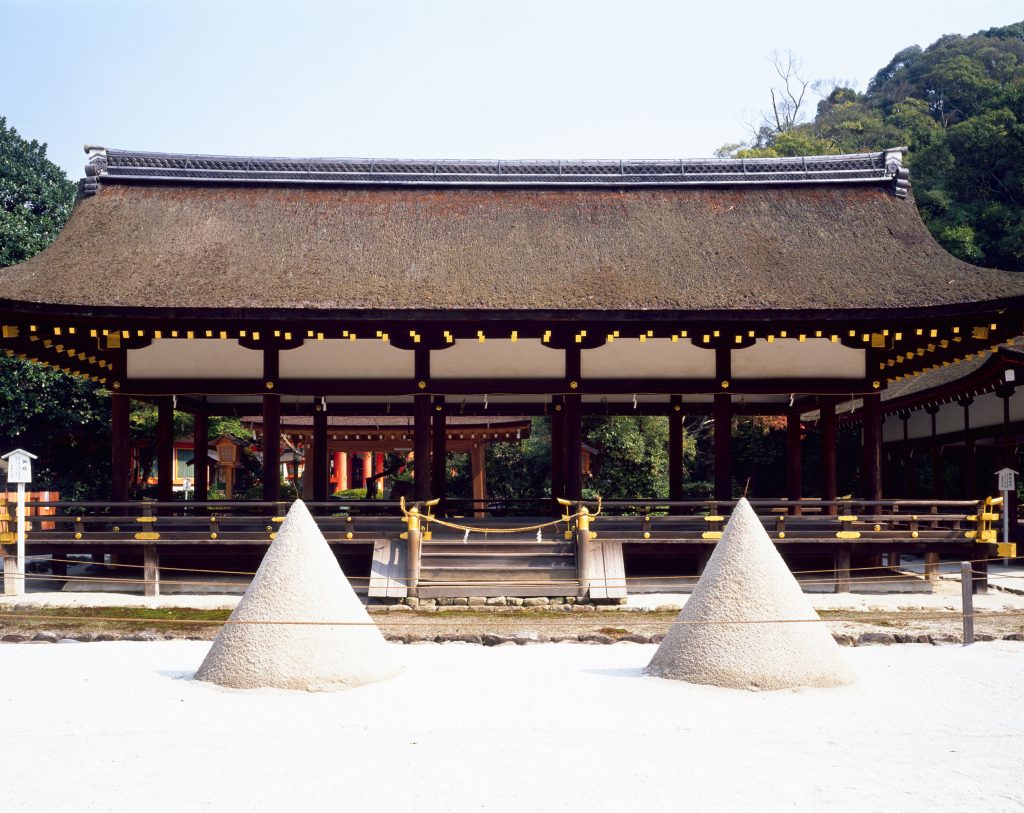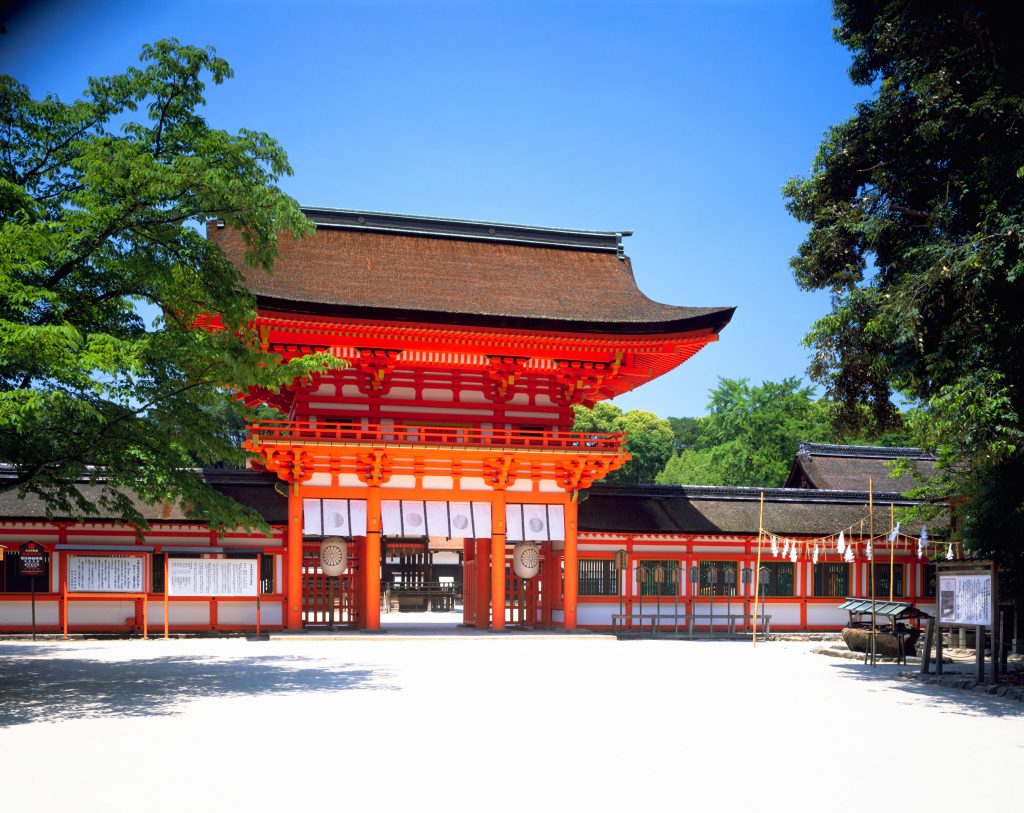Getting Here & Parking > Around ICC Kyoto
Around ICC Kyoto
Map
Refer to this map for convenience stores, post offices, and restaurants nearby.

Restaurant guide

Sightseeing spots around ICC Kyoto
- *Make sure to inquire with facilities before visiting.
- *Taxi times are estimates departing from the conference center.
- *Bus times are estimates from the Kokusaikaikan-mae bus stop.
- *Subway times are estimates from Kokusaikaikan Station.
Shrines and temples
Iwakura Area
| Jissoin Monzeki Temple |
A “Monzeki” temple of the Tendai Jimon sect, meaning that members of the Imperial Family formerly served as priests there. Has a rock garden and a vast garden with the Hiei mountains in the background. The reflections of maple trees into the Taki-no-ma room are famously known as the “floor of new greenery”, “floor of red maple leaves”, and “floor of snow-dusted trees”.
|
|---|---|
| Iwakura Jinja Shrine |
Iwakura Jinja Shrine was believed to be the guardian deity of the former Iwakura village, and in the early modern era and earlier, it was the tutelary shrine of Daiunji Temple. The Iwakura Fire Festival (registered as a Kyoto Intangible Folklore Cultural Asset) is held every year on the closest Saturday to October 23rd. In the past, people lighted a giant torch to banish a great serpent, and the flame that leaps high into the sky when the torch is lighted is truly a sight to see.
|
| Sohonzan Myomanji Temple |
The head temple of the Kempon Hokke sect, built by its founder Nichiju Daishoshi. The rock garden created by Matsunaga Teitoku (1571-1653), said to be the father of haiku, is a must-see. Houses the Bell of Anchin and Kiyohime from the famous Dojoji story in Kabuki.
|
| Entsuji Temple |
A mountain villa where Emperor Go-Mizunoo lived before moving to the Shugakuin Imperial Villa. The green-moss-covered level rock garden is surrounded by sasanqua hedges, and the “borrowed scenery” of Mt. Hiei through the cedar and cypress grove is designated as a place of scenic beauty.
|
Kamitakano Area
| Miyake Hachimangu Shrine |
Known as a protective deity of children, this shrine is well-known for blessings for alleviating tantrums and night-time crying, curing children’s illnesses, and academic success. It is fondly known by its nickname “Mushi-Hachiman-san”. The shrine was founded when the envoy Ono no Imoko of the court of Empress Suiko invited the Usa Hachiman shrine to this location. Enshrines Emperor Ojin.
|
|---|---|
| Rengeji Temple |
Tendai sect temple. Imaeda Chikayoshi, chief retainer of the Kaga clan, moved the temple from central Kyoto to its present location and restored it in the Kanbun years (1661-1673) of the early Edo period. Famous among tea ceremony practitioners for the Rengeji-style stone lantern with a steeply-inclined hexagonal top in front of the main hall. A bronze bell inscribed with the name of Mokuan, second-generation master of the Obaku Zen sect, hangs in the bell tower. The wandering path garden is said to be the work of Ishikawa Jozan.
|
Shugakuin Area
| Sekizan Zen-in Temple |
An affiliated temple of Enryakuji Temple in the western foothills of Mt. Hiei. Founded by Tendai head priest Anne in 888, following the will of Jjikaku Daishi Ennin. A branch temple of Hieizan Enryakuji Temple.
|
|---|---|
| Manshuin Monzeki Temple |
A “Monzeki” temple of the Tendai sect, meaning that members of the Imperial Family formerly served as priests there. This temple was begun when Saicho built a hall on Mt. Hiei, and it was moved to its present location in 1656 in the era of Head Priest Ryosho-Nyudoshinno. Both the Great Shoin and Small Shoin halls are designated as Important Cultural Properties, and a beautiful Ranma transom and furnishings may be viewed within.
|
| Enkoji Temple |
Tokugawa Ieyasu built this temple in Fushimi as a place of scholarship and invited Priest Kanshitsu Genkitsu there, and later it was moved to the Rakuhoku area. The temple also published the “Enkoji Version” of Chinese classics, and the wooden printing types used still exist today (an Important Cultural Property). It is also famous for the Ju-gyu-no-niwa wandering garden, and the famed Suikinkutsu (musical garden ornament) demonstrates a style unique to the Rakuhoku area, which is blessed with plentiful water.
|
| Shisendo Jozanji Temple |
A tea hut built by Ishikawa Jozan, a close advisor of Tokugawa Ieyasu, as his hermitage in 1641. The temple is named after the portraits of 36 Chinese poets drawn by Kano Tanyu and hung in the Shisen-no-ma room of the Ototsuka (name of the hut).
|
Kamigamo Area
| Oota Jinja Shrine |
An auxiliary shrine of Kamigamo Jinja, enshrining the deity Amenouzume-no-Mikoto. This shrine has wild clusters of irises (a Natural Monument) growing in the Oota marsh. These were mentioned in the poems of Fujiwara no Shunzei, showing that they were already famous in the Heian era. The shrine is crowded with worshippers and tourists when the flowers blossom in early May.
|
|---|---|
| Kamigamo Jinja Shrine (World Heritage Site) |
This shrine enshrines Kamo-wake-ikazuchi-no-okami, the patron god of the Kamo clan. The Aoi Matsuri (Kamo Matsuri) is famous as one of the three great festivals of Kyoto. The shrine contains many Important Cultural Properties and is registered as a World Heritage Site, and the Honden and Gonden main halls are designated as National Treasures. The shrine was renovated in the Shikinen Sengu ceremony of 2015.
|
Shimogamo Area
| Shimogamo Jinja Shrine (World Heritage Site) |
One of the oldest shrines in Kyoto, constructed before the Heian era, and revered as “Yamashiro-no-kuni Ichi-no-miya” (a venerable shrine of old Kyoto). This shrine prays for matters of state and the peace of the Japanese people, and the Kamo Saiin imperial shrine maiden system and the Shikinen Sengu shrine rebuilding system were established here. The vast grounds of Tadasu-no-Mori, a National Historic Site, contains two Honden halls (National Treasures) and 53 shrines which are Important Cultural Properties, and the shrine is also registered as a World Heritage Site.
|
|---|---|
| Shokokuji Temple |
Headquarters of Shokokuji sect of Rinzai Zen. Founded by Muso Soseki and constructed by Ashikaga Yoshimitsu, the 3rd shogun of the Muromachi shogunate. The Hatto hall (Important Cultural Property) was rebuilt in 1605 by a donation from Toyotomi Hideyori, and is the oldest existing of its type. The painting of a dragon on the ceiling by Kano Mitsunobu is known as the “crying dragon”. The Jotenkaku Museum on its grounds displays temple treasures and works of art related to Shokokuji, Rokuonji (Kinkakuji), Jishoji (Ginkakuji), and other temples. Works by Ito Jakuchu and other artists are on permanent display, and temporary exhibitions are also held.
|
Murasakino Area
| Imamiya Jinja Shrine |
Believed to have enshrined a god of pestilence to prevent plagues since at least the Heian Period. It is the familial shrine of Keishoin, the mother of the fifth Tokugawa shogun Tsunayoshi, and is filled with visitors seeking a favorable marriage. The Yasurai Festival in spring wards off infectious diseases, and it is believed that you can avoid illness by standing under the decorative umbrella.
|
|---|---|
| Daitokuji Temple |
With a mountain name of Ryuhozan, it is the headquarters of the Daitokuji sect of Rinzai Zen. It was built by Shuho Myocho, also known as Daito Kokushi (national teacher of the great lamp) in 1315 at the end of the Kamakura period. It was destroyed in the Onin War in the Muromachi era, but rebuilt by Ikkyu Sojun. In the Momoyama era, Toyotomi Hideyoshi held the funeral of Oda Nobunaga here and built the Soken-in to memorialize him. He also granted the temple territory, beginning a flourishing trend of warlords constructing memorial temples.
|
Other landmarks
Iwakura Area
| The Former Retreat of Tomomi Iwakura |
A prominent politician of the Bakumatsu and Meiji periods, Iwakura Tomomi (1825-1883) secluded himself at the height of the Sonno Joi movement to restore the Emperor because he was seen as a leading figure in the Sabaku-ha faction supporting the shogun. He lived in this residence for three years, from 1864 to 1867, and it was designated as a Place of Historic Value in 1932.
|
|---|---|
| Kyoto Folk Crafts Museum |
Opened 1981. Displays 1500 practical crafts gathered in keeping with the spirit of the Mingei Folk Crafts Movement led by Yanagi Soetsu. Pottery, dyed and woven textiles, paintings, woodwork, and other crafts from Japan and around Asia are displayed. The earthen-wall building itself is also a significant piece of architectural culture.
|
Kitayama Area
| Kyoto Botanical Gardens |
Opened in 1924 as the oldest public comprehensive botanical garden in Japan. Has a total area of about 240,000 square meters and contains about 12,000 types of plants.
|
|---|
Shugakuin Area
| Shugakuin Imperial Villa |
A vast mountain retreat created by Emperor Go-Mizunoo in 1659-1659 at the foot of Mt. Hiei.
|
|---|

